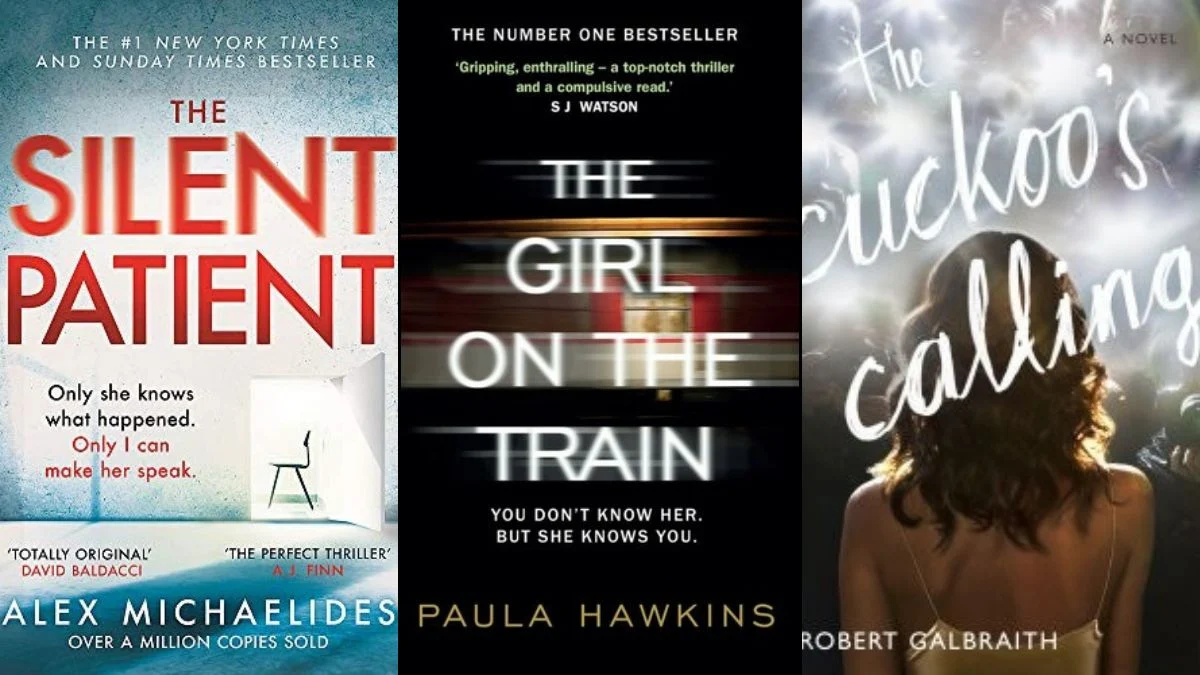
As the weather gets colder and the days get shorter, a gripping story is the perfect way to spend a cozy evening. This collection features puzzling mysteries, suspenseful psychological thrillers, complicated legal dramas, and exciting chases – all ideal for enjoying with a blanket and a warm drink.
You’ll discover books taking place in cozy small towns, bustling big cities, and remote locations full of mystery. With each suggestion, we provide a brief overview of the story, where it’s set, and what makes it unique, helping you find the perfect read without having to wonder.
Gone Girl – Gillian Flynn

‘Gone Girl’ centers around Nick and Amy Dunne, beginning when Amy goes missing on their fifth wedding anniversary. The narrative alternates between Nick’s perspective in the present and entries from Amy’s diary. This technique builds a timeline that gradually reveals the truth and highlights the differences in how they each viewed their marriage.
Released in 2012, ‘Gone Girl’ takes place in North Carthage, Missouri, and also features scenes set in New York City during the initial parts of the story. The novel delves into the complexities of untrustworthy storytelling, the intense focus of the media, and the difference between how people appear publicly and how they behave privately. These themes are revealed through carefully placed hints that change in significance as the story unfolds with each new chapter.
The Girl with the Dragon Tattoo – Stieg Larsson
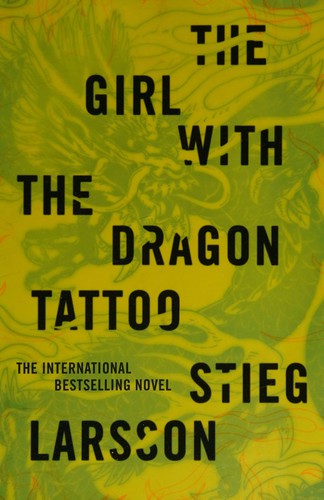
‘The Girl with the Dragon Tattoo’ follows journalist Mikael Blomkvist and hacker Lisbeth Salander as they work together to solve the long-standing mystery of Harriet Vanger’s disappearance. Their investigation takes them through old family records, exposes cases of corporate wrongdoing, and leads them to a secluded island in Sweden, all unfolding during a time of puzzling, isolated events.
Originally published in Sweden in 2005, ‘The Girl with the Dragon Tattoo’ is the first book in the Millennium series. It’s a compelling story that mixes financial wrongdoing with the mystery of an unsolved case. The book enhances the investigative feel by including realistic details like documents, news articles, and research, which also help readers understand the complex relationships within the Vanger family.
The Silent Patient – Alex Michaelides

‘The Silent Patient’ tells the story of Alicia Berenson, a painter who mysteriously stops talking after being accused of killing her husband. Psychotherapist Theo Faber takes a position at the secure facility where Alicia is being held, and attempts to understand her silence through therapy and his own investigations.
Released in 2019, ‘The Silent Patient’ is set in London and cleverly uses Alicia’s mysterious artwork to provide hints and clues. The story is told through clinical records, diary entries, and a focused first-person perspective, carefully controlling how we learn about the characters’ motivations and identities.
The Girl on the Train – Paula Hawkins
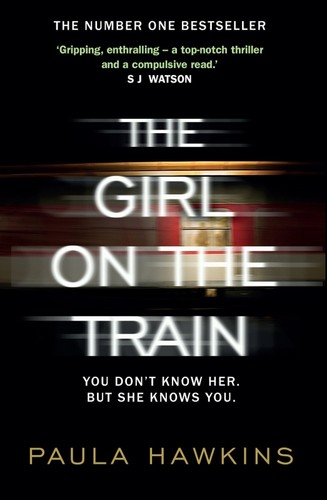
‘The Girl on the Train’ centers around Rachel Watson, who watches a couple while riding her train to work and unexpectedly finds herself caught up in the search for a missing person. The story is told from the perspectives of three different women, and the chapters are organized by date and time to clearly show each character’s location during important moments.
I was really captivated by ‘The Girl on the Train’ when it came out in 2015. It’s set in and around London, and what I found most interesting was how it played with unreliable memories and how trustworthy witnesses really are. The author cleverly used things like police interviews, details about the neighborhood, and even the train schedule to help *us*, as readers, piece together what happened that night. It felt like we were detectives trying to reconstruct the events ourselves!
The Da Vinci Code – Dan Brown
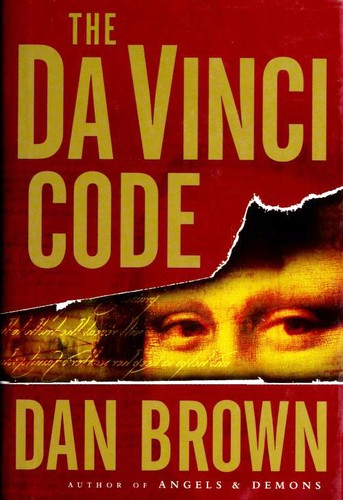
I was immediately hooked by ‘The Da Vinci Code’ – it starts with a shocking murder right in the Louvre! It follows Robert Langdon, a symbologist, and Sophie Neveu, a cryptologist, as they race across Paris and even further afield. What I found so fascinating was how the story weaves together ciphers, anagrams, and famous artworks to create a trail of clues. It all leads to a big secret that’s been carefully guarded by a historical society for a long time.
Originally released in 2003, ‘The Da Vinci Code’ is a fast-paced thriller that blends art history and religious imagery. Its short chapters, constant surprises, and puzzle-like plot create an easy-to-follow journey through museums, churches, and archives. It feels like following a clear trail of clues.
Shutter Island – Dennis Lehane

‘Shutter Island’ tells the story of U.S. Marshal Teddy Daniels, who travels to Ashecliffe Hospital to find a patient who has disappeared. A severe storm cuts off the island and causes a power outage, effectively trapping the investigators and hospital staff. To make matters worse, important medical records and patient files begin to vanish.
Released in 2003, ‘Shutter Island’ is set in 1954 and skillfully blends a psychological assessment with a classic detective story. The film’s environment-using things like hospital floor plans, patient records, and admission papers-builds the suspense, all leading up to a crucial final evaluation.
The Snowman – Jo Nesbø

‘The Snowman’ centers around Oslo detective Harry Hole as he hunts a serial killer who builds snowmen near where they commit crimes. The case unfolds over several winters and reveals connections between previously unsolved disappearances.
Originally published in English in 2010, ‘The Snowman’ features detailed forensic science related to cold climates and uses weather to account for lost or degraded evidence. The investigation is built on a solid framework of police reports, national databases, and recreations of the crime scene, which all support the search for answers.
The Woman in the Window – A. J. Finn
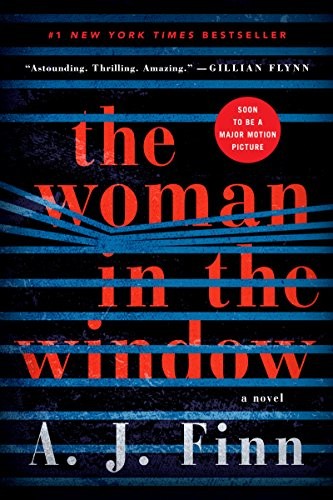
‘The Woman in the Window’ follows Anna Fox, a woman who suffers from agoraphobia and thinks she’s seen a crime happen at the house next door. The narrative incorporates elements like online discussions, records from therapy sessions, and allusions to well-known films, all of which reflect Anna’s solitary life.
Released in 2018 and taking place in New York City, ‘The Woman in the Window’ cleverly uses a limited setting – a single location – to emphasize how things are *seen*. It pays close attention to viewpoints, like camera angles, and what characters notice from a window. The story also keeps track of when characters take medication and the weather to help the reader evaluate how reliable each observation is.
The Lincoln Lawyer – Michael Connelly

‘The Lincoln Lawyer’ features Mickey Haller, a defense attorney who operates his law office out of his car-a chauffeured sedan. He represents a prominent client charged with assault and, while investigating the case, discovers connections to a previous client through evidence he uncovers.
Published in 2005, ‘The Lincoln Lawyer’ is the initial installment in the Mickey Haller series and offers a realistic look at how criminal defenses work – including plea bargains and picking a jury. The story unfolds through a collection of legal documents like motions, transcripts, and notes from investigators, which create a believable paper trail.
The Firm – John Grisham

‘The Firm’ tells the story of Mitch McDeere, a recent law school graduate who starts working at a small law firm in Memphis. The firm offers a surprisingly high salary. As Mitch begins to notice questionable billing practices and a hidden client list, he finds himself caught between the firm and federal agents who require his help to gather evidence from within.
Originally released in 1991, ‘The Firm’ details how criminals use offshore accounts, secret files, and privacy rules to hide their activities. The book follows the process of uncovering financial crimes, illustrating tactics like hidden photocopying, coded records, and methods to avoid being watched. It shows the real-world steps involved in revealing these illegal operations and the practical techniques used to do so. Learn more about financial crime.
And Then There Were None – Agatha Christie

‘And Then There Were None’ brings together ten guests on a secluded island, where they are each confronted with a crime from their past. A poem and a collection of figurines function as a chilling countdown, as the guests are killed off one by one, mirroring the verses of the rhyme.
The Cuckoo’s Calling – Robert Galbraith
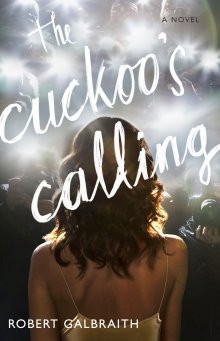
‘The Cuckoo’s Calling’ begins the story of private investigator Cormoran Strike. He’s asked to investigate the death of famous model Lula Landry. The investigation takes Strike and his assistant, Robin Ellacott, into the glamorous worlds of London’s fashion and media, where they interview people and carefully examine schedules to uncover the truth.
Released in 2013, ‘The Cuckoo’s Calling’ builds its investigation around establishing alibis, creating a timeline of events, and understanding the physical space of a building in Mayfair. As the story unfolds, phone records, security footage, and business agreements are used to distinguish between speculation and confirmed information.
Before I Go to Sleep – S. J. Watson

‘Before I Go to Sleep’ centers around Christine Lucas, a woman who wakes up each day with no memory of events beyond the immediate present. She has to piece together her life story anew each time. To help her, she maintains a private journal where she records recent information and flags inconsistencies from the past.
‘Before I Go to Sleep’, which came out in 2011 and is located in London, tells its story through diary entries. These entries essentially start each day fresh. Medical appointments, photos, and voicemail messages serve as evidence to either support or question the information Christine receives.
The Silence of the Lambs – Thomas Harris

‘The Silence of the Lambs’ follows FBI trainee Clarice Starling as she works with the imprisoned psychiatrist Hannibal Lecter. Lecter offers crucial clues about a serial killer nicknamed Buffalo Bill. The story unfolds through examining case files, autopsy reports, and various behavioral analysis methods.
First published in 1988, ‘The Silence of the Lambs’ shows how investigators use profiling, the study of victims (victimology), and organized evidence to guide their work in the field. The book provides specific, step-by-step details on how different agencies can work together and the planning involved before a successful rescue operation.
The Chain – Adrian McKinty

‘The Chain’ tells the story of a desperate kidnapping plot where parents are forced to abduct a child in order to save their own. The story centers on Rachel, who receives directions via phone and the internet as she tries to uncover the source of this disturbing network.
Originally released in 2019, ‘The Chain’ explores how criminals manage their operations through techniques like secure digital practices, temporary online accounts, and cash management. The story uses timelines, phone records, and evaluations of potential dangers to show how Rachel collects clues and uncovers the identities of those behind the system.
Behind Closed Doors – B. A. Paris
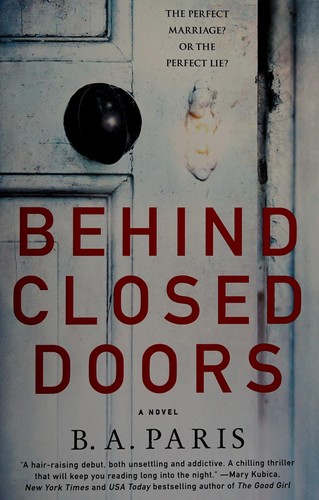
‘Behind Closed Doors’ depicts a marriage that seems ideal to outsiders, but hides controlling behavior behind the scenes. The narrative shifts between the past and present, revealing how seemingly insignificant decisions gradually created a perilous environment.
Released in 2016, ‘Behind Closed Doors’ details the legal and practical challenges victims encounter when attempting to leave an abusive situation. The film shows how things like bank accounts, property ownership, and even daily routines can be used to control someone, and it outlines the necessary steps to create a plan for safely leaving.
The Reversal – Michael Connelly

In ‘The Reversal’, defense lawyer Mickey Haller and prosecutor Rachel Walling join forces for a highly publicized retrial. Simultaneously, detective Harry Bosch leads the investigative work. The story centers around a case where fresh forensic evidence casts doubt on a previous conviction.
I was really captivated by ‘The Reversal’, published in 2010. It skillfully jumps between the legal tactics used in court and the actual investigative work being done. What I found particularly interesting was how it breaks down things like the chain of custody, jury instructions, and expert testimony, showing you step-by-step how evidence can become stronger or weaker when a case is retried. It really made me think about how a retrial can shift perspectives.
The Alienist – Caleb Carr

‘The Alienist’ takes place in New York City in 1896. It centers around Dr. Laszlo Kreizler, a pioneer in the field of psychology, as he develops a profile of a serial killer who is preying on children. Helping him is a team that includes a journalist and the first woman to work for the police department in an office position, giving them access to important records.
Originally released in 1994, ‘The Alienist’ meticulously researched the era, employing techniques like fingerprint analysis and mapping elevated train lines for accuracy. The story features real historical figures in secondary roles and illustrates the development of modern investigative techniques. It provides insight into how these methods began to take shape.
I Am Watching You – Teresa Driscoll

‘I Am Watching You’ starts with someone observing two men talking to young girls on a train, and then discovering that one of the girls is now missing. The story is told from the perspectives of the person who saw them, the missing girl’s father, and the detective working on the case, giving us a look at the situation from multiple viewpoints.
Published in 2017, ‘I Am Watching You’ gathers information from letters, anonymous tips received via a hotline, and door-to-door inquiries. The book organizes these accounts by time, noting when statements and sightings occurred, and then verifies their accuracy by comparing them to travel times and phone records.
Killing Floor – Lee Child

‘Killing Floor’ begins with Jack Reacher’s arrival in the quiet town of Margrave, Georgia, where he is immediately arrested for a crime he didn’t commit. As the story unfolds, the investigation reveals a counterfeiting scheme with connections to federal authorities.
Originally released in 1997, ‘Killing Floor’ details how the movement of money, printing materials, and delivery plans could enable widespread counterfeiting. The book follows the investigation through interviews, searches of storage facilities, and the combined efforts of city and national law enforcement as the scope of the case grows.
Tell us about the books you love reading in the fall in the comments below! Help other readers discover their next exciting thriller.
Read More
- Gold Rate Forecast
- Bitcoin’s Ballet: Will the Bull Pirouette or Stumble? 💃🐂
- SentinelOne’s Sisyphean Siege: A Study in Cybersecurity Hubris
- LINK’s Tumble: A Tale of Woe, Wraiths, and Wrapped Assets 🌉💸
- Dogecoin’s Big Yawn: Musk’s X Money Launch Leaves Market Unimpressed 🐕💸
- Binance’s $5M Bounty: Snitch or Be Scammed! 😈💰
- Can the Stock Market Defy Logic and Achieve a Third Consecutive 20% Gain?
- Ethereum’s $3K Tango: Whales, Wails, and Wallet Woes 😱💸
- Navitas: A Director’s Exit and the Market’s Musing
- VUG vs. VOOG: A Kafkaesque Dilemma in Growth ETFs
2025-10-05 16:48